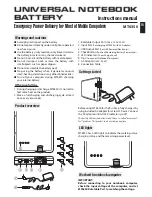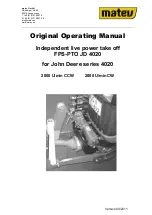
Preparing for use
R&S
®
NRP Series
24
Getting Started 1419.0170.02 ─ 16
Troubleshooting for peer-to-peer connections
1. Allow a waiting time, especially if the computer was used in a network before.
2. Check that only the main network adapter is active on the computer. If the
computer has more than one network interfaces, explicitly disable all other
network interfaces if you plan to utilize a peer-to-peer connection to the power
sensor.
3. Check that the IP address assigned to the remaining main network adapter
starts with
169.254
. The IANA (Internet assigned numbers authority) has
reserved the range
169.254.0.0
to
169.254.255.255
for the allocation of
automatic private IP addresses (APIPA). Addresses from this range assuredly
cause no conflicts with any routable IP address.
4. Try to establish a connection to the power sensor with both the default host-
name and the hostname extended with
.local
, for example:
nrp18sn-101441
nrp18sn-101441.local
3.7.3.3
Using hostnames
In a LAN that uses a domain name system (DNS) server, each connected com-
puter or instrument can be accessed via an unambiguous hostname instead of an
IP address. The DNS server translates the hostname to the IP address. Using the
hostname is especially useful when a DHCP server is used, as a new IP address
can be assigned each time the instrument is restarted.
Each power sensor is delivered with a default hostname assigned. You can
change the default hostname.
Default hostname
The default hostname follows the syntax:
<device name>-<serial number>
, where:
●
<device name>
is the short name of your sensor.
For example, the
<device name>
of R&S NRP18SN is
nrp18sn
.
●
<serial number>
is the individual serial number of the power sensor. The
serial number is printed on the name plate at the rear side of the sensor. It is
part of the device ID printed above the barcode:
Connecting to a controlling host
















































